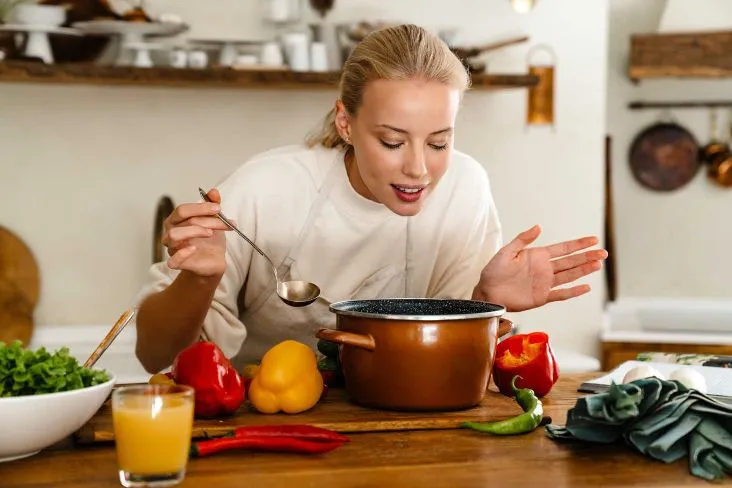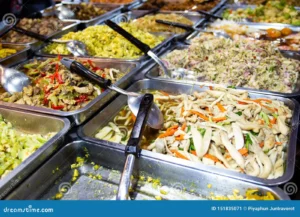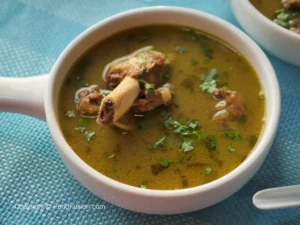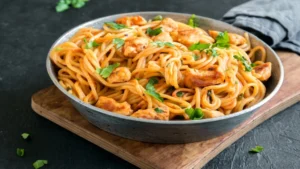Ever wondered why some soups taste richer, deeper, and more comforting than others? The secret lies in the soup bones. Whether you’re making a traditional bone broth, a hearty stew, or a homemade stock, Soup bones play a starring role.
Many home cooks have rediscovered the power of beef soup bones thanks to old-fashioned cooking methods like using a dutch oven or a crock pot. From creating a nourishing broth to pulling flavor from every cut of the animal, soup bones are more than just scraps—they’re culinary gold.
In recent years, more people have turned to homemade cooking, especially after 2024 at brought a new focus on health and sustainability. If you’re looking for ways to stretch your food budget, reduce waste, and boost nutrition, learning how to cook beef soup bones is a skill worth mastering. Let’s dive deep into what beef soup bones are, how to use them, and why they belong in your kitchen.
Beef Soup Bones Recipes—What are they and how to cook them?

Beef soup bones come from various parts of the cow, like the shank, neck, or knuckles. These bones are usually meaty and full of connective tissue, which makes them perfect for soups and broths. When simmered slowly, the bone marrow inside melts into the liquid, creating a rich and flavorful base.
Many recipes call for roasting the bones first in a dutch oven or on a baking sheet to deepen their flavor before adding them to the pot.
You can cook beef soup bones in a few different ways. One popular option is to simmer them slowly on the stove for several hours, which draws out collagen and minerals.
Another method is using an instant pot, which speeds up the process while still delivering great results. If you like hands-off cooking, a crock pot is a fantastic choice, letting the bones simmer gently all day without needing much attention.
Whatever method you choose, adding ingredients like orange peel, herbs, and vinegar can help release even more nutrients from the bones.
If you’re curious about traditional recipes, some cultures even include spices or dried peel powder for extra flavor.
Nose to Tail Cooking
In recent years, there’s been growing interest in nose to tail cooking, a practice that uses every part of beef to reduce waste and honor the animal.
By making use of soup bones, you’re tapping into this age-old tradition. Instead of throwing away bones after the prime cuts are taken, they’re transformed into nutritious broths, soups, and sauces.
This approach aligns with sustainable cooking, encouraging home cooks to continue how their grandparents cooked—by making the most of every ingredient.
Beyond soups, leftover broth made from beef soup bones can be used in many dishes. Try swapping water for broth when cooking spanish rice or oven spanish dishes to add depth of flavor.
You can even use it as a base for pot yogurt marinades or to moisten stale bread like apple bread or discard cornbread. With a little creativity, you’ll find countless ways to work bone broth into meals.
What are Beef Soup Bones?
Beef soup bones include a variety of bones, each bringing something special to the pot. Marrow bones are prized for their soft, buttery interior that melts into the broth. Knuckle bones are packed with cartilage and collagen, which turn into gelatin when simmered.
Meaty bones, like oxtail or shank, contribute both flavor and texture. Below is a table showing common types of beef soup bones and their best uses:
| Type of Bone | Best Use | Special Benefit |
|---|---|---|
| Marrow Bones | Broths, roasting | Adds richness, healthy fats |
| Knuckle Bones | Soups, stock | High collagen for gel texture |
| Meaty Bones | Stews, slow-cooked soups | Adds flavor, extra meat |
Many butchers sell soup bones labeled simply as “soup bones” or “stock bones,” but it’s worth asking for specific cuts depending on your recipe. Whether you’re making a great pot of broth from scratch or experimenting with different bones, each type adds a unique touch.
How to Cook Beef Soup Bones

To get the most flavor and nutrition from beef soup bones, you’ll want to follow a few key steps. First, roast the bones in a dutch or oven at high heat until browned.
This step caramelizes the surfaces, creating deeper, richer flavors. Once roasted, transfer them to a pot, cover with water, and bring to a boil. Skim any foam that rises to the surface for a cleaner broth.
For aromatics, add onion, garlic, orange peel, herbs, and a splash of vinegar to help extract minerals. Let the pot simmer gently for 12 to 24 hours on the stove or use an instant pot for a quicker pot option.
If using a crock pot, set it to low and let it cook overnight. The longer the cooking time, the more nutrients are pulled from the bones.
Here’s a table comparing different cooking methods:
| Method | Cooking Time | Benefit |
|---|---|---|
| Stove | 12-24 hours | Traditional, deep flavor |
| Instant Pot | 2-4 hours | Fast, convenient |
| Crock Pot | 12-24 hours | Low effort, hands-off cooking |
Once finished, strain the broth, discard the solids, and store in the fridge or freezer. If you notice a layer of fat on top after chilling, you can remove it or stir it back in depending on your preference. Some even use the fat for easy skillet cooking or as a base for frying.
Nutritional Benefits of Beef Soup Bones
Cooking with beef soup bones offers more than just flavor. They’re packed with bone marrow, collagen, gelatin, and essential minerals like calcium, magnesium, and phosphorus.
These nutrients support joint health, gut health, and skin elasticity. Drinking bone broth made from soup bones can be a comforting way to boost your intake of these compounds, especially if you’re following a diet that avoids processed foods.
Studies have shown that homemade broth contains amino acids like glycine and proline, which may help with digestion and inflammation. Plus, when you use beef soup bones in a homemade broth, you’re controlling what goes in—no hidden additives or preservatives.
According to joelle says, a nutrition expert interviewed in says march, bone broth is an affordable way to nourish your body without breaking the bank.
Conclusion
Cooking with soup bones connects you to old-world flavors and sustainable practices. Whether you’re using a dutch oven, an instant pot, or a crock pot, there’s no wrong way to cook them. You’ll discover that even simple ingredients like soup bones can create nourishing meals from scratch.
As you explore this traditional art, you might find yourself experimenting with adding broth to dishes like spanish rice, gluten-free dutch baby, or even pouring it over discard cornbread for a quick, warming snack.
If you’ve never tried making bone broth at home, now’s the perfect time. Share your experience in the comments below and let’s keep this delicious tradition alive.
FAQs
-
What are soup bones, and what are they used for?
Soup bones are bones (usually from beef, pork, or chicken) that still have some meat, cartilage, and marrow attached. They’re used to make flavorful broths and stocks by simmering them in water with vegetables and seasonings. -
How long should I simmer soup bones to make broth?
For a rich, flavorful broth, simmer beef or pork bones for 12–24 hours, and chicken bones for 6–12 hours. The longer you simmer, the more nutrients and flavor are extracted. -
Do I need to roast soup bones before making broth?
Roasting soup bones in the oven at 400°F (200°C) for 30–45 minutes before simmering enhances the flavor and gives the broth a deeper, richer color. It’s optional, but highly recommended for beef or pork bones. -
Can I reuse soup bones for a second batch of broth?
Yes, but the second batch (called a “remouillage”) will be lighter and less flavorful. Most nutrients and gelatin are extracted during the first simmer. -
Are soup bones healthy?
Yes—soup bones are a great source of collagen, minerals (like calcium and magnesium), and amino acids. Bone broth made from soup bones is often praised for supporting joint health, digestion, and skin health.










